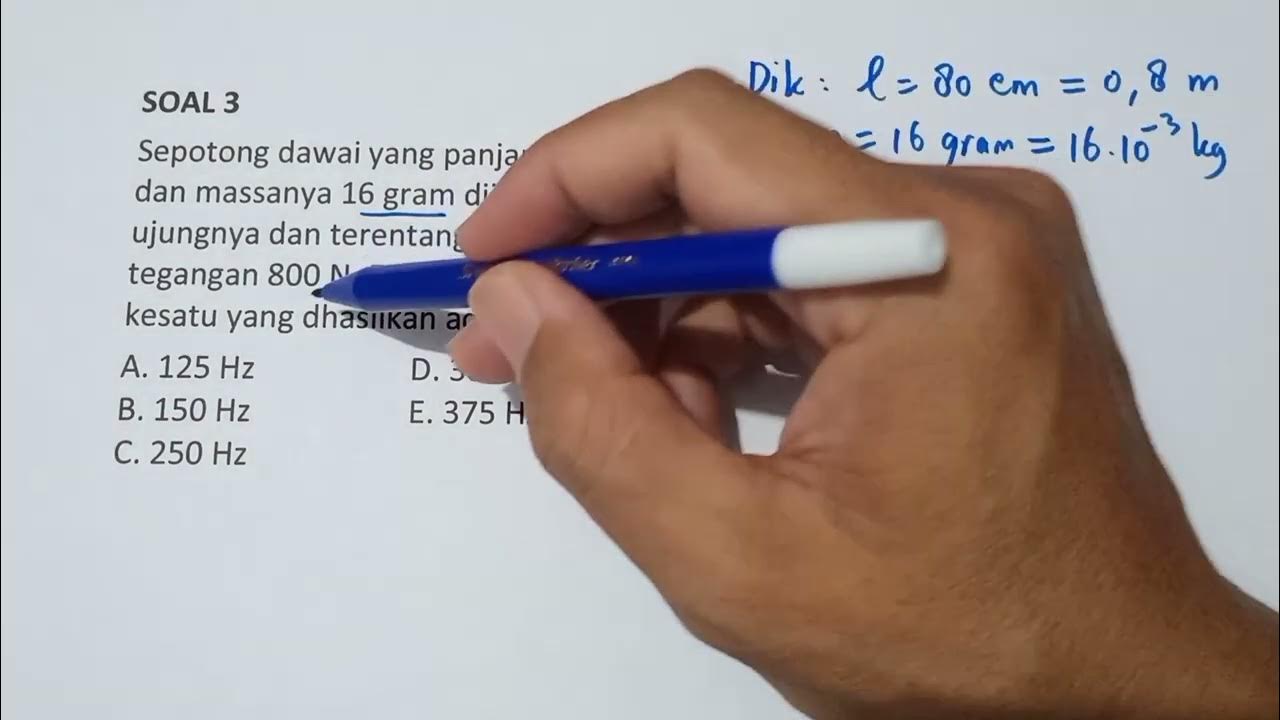F=ma Rectangular Coordinates | Equations of motion | (Learn to Solve any Problem)
Summary
TLDRThis video tutorial guides viewers through solving physics problems using the equation F = MA. It covers essential concepts like normal force, static and kinetic friction, and free-body diagrams. The tutorial progresses from basic examples to more complex scenarios involving inclined planes, pulleys, and springs, emphasizing the importance of drawing clear diagrams and utilizing equations of equilibrium and motion. By the end, viewers will be equipped to tackle various problems and enhance their understanding of the fundamental principles of physics.
Takeaways
- 😀 Understanding the equation F = MA is essential for solving physics problems involving forces and motion.
- 📏 Weight is calculated by multiplying mass (in kg) by the acceleration due to gravity (9.81 m/s²).
- ⚖️ The normal force acts perpendicular to the surface on which an object rests, counteracting the object's weight.
- 🛑 Friction is classified as static (when the object is at rest) or kinetic (when the object is in motion), and is determined using the coefficient of friction.
- 📊 To solve for an object's movement, draw a Freebody diagram to visualize all forces acting on it.
- ⏱️ Acceleration can be determined by using force equations, particularly in scenarios involving static and kinetic friction.
- 🔄 In problems involving inclined planes, set the coordinate system along the incline to simplify calculations.
- 🔗 In pulley systems, only one equation is necessary due to the interconnected nature of the system.
- 📏 The kinematic equations can be used to find displacement, velocity, and acceleration in various scenarios.
- 🧮 Always ensure to identify the direction of forces and accelerations properly when setting up equations to avoid confusion.
Q & A
What is the fundamental equation discussed in this chapter?
-The fundamental equation discussed is Newton's second law, represented as F = ma, where F is the force, m is the mass, and a is the acceleration.
How is weight calculated for an object?
-Weight is calculated by multiplying the mass of the object by the acceleration due to gravity, given as W = mg, where g is approximately 9.81 m/s².
What are the two types of friction mentioned?
-The two types of friction mentioned are static friction (when an object is not moving) and kinetic friction (when an object is moving).
What does the normal force represent in this context?
-The normal force represents the force exerted perpendicular to the surface of contact that supports the weight of an object resting on that surface.
What is the purpose of drawing a Free Body Diagram?
-A Free Body Diagram is used to visually represent all the forces acting on an object, helping to analyze and solve for unknowns in physics problems.
Why do we need to check the frictional force against the applied force?
-We need to check the frictional force against the applied force to determine if the object will move or remain stationary; if the applied force exceeds the maximum static friction, the object will move.
How do you determine if an object will move under a given force?
-To determine if an object will move, compare the applied force to the maximum static frictional force. If the applied force is greater, the object will move.
What is Hooke's Law, and how is it applied in this chapter?
-Hooke's Law states that the force needed to compress or extend a spring is proportional to the distance it is stretched, expressed as F = kx, where k is the spring constant and x is the displacement.
In the example involving the pulley system, how is the direction of movement defined?
-In the pulley system example, the direction of movement is defined by drawing the position coordinates downwards, which assumes downward movement to be positive.
What is the significance of using kinematics equations in this chapter?
-Kinematics equations are significant as they allow for the calculation of various parameters of motion, such as velocity and displacement, especially in problems involving acceleration and time.
Outlines

此内容仅限付费用户访问。 请升级后访问。
立即升级Mindmap

此内容仅限付费用户访问。 请升级后访问。
立即升级Keywords

此内容仅限付费用户访问。 请升级后访问。
立即升级Highlights

此内容仅限付费用户访问。 请升级后访问。
立即升级Transcripts

此内容仅限付费用户访问。 请升级后访问。
立即升级浏览更多相关视频

7D Funtional Equations and Identities

MOVIMENTO UNIFORMEMENTE VARIADO - (MUV)

Mudah Mengerjakan Soal Gelombang Dawai || Fisika Kelas XI || #oprekmafiki #fisikasma #fisikaasyik

Bestem a,b og c fra tredjegradsfunksjon med Geogebra CAS (1T-matte)

Belajar IPA | Usaha Kelas 8 SMP/MTs #Usaha #Fisika

M172 - Operator Diferensial Vektor : Del atau Nabla,memahami secara mudah
5.0 / 5 (0 votes)
